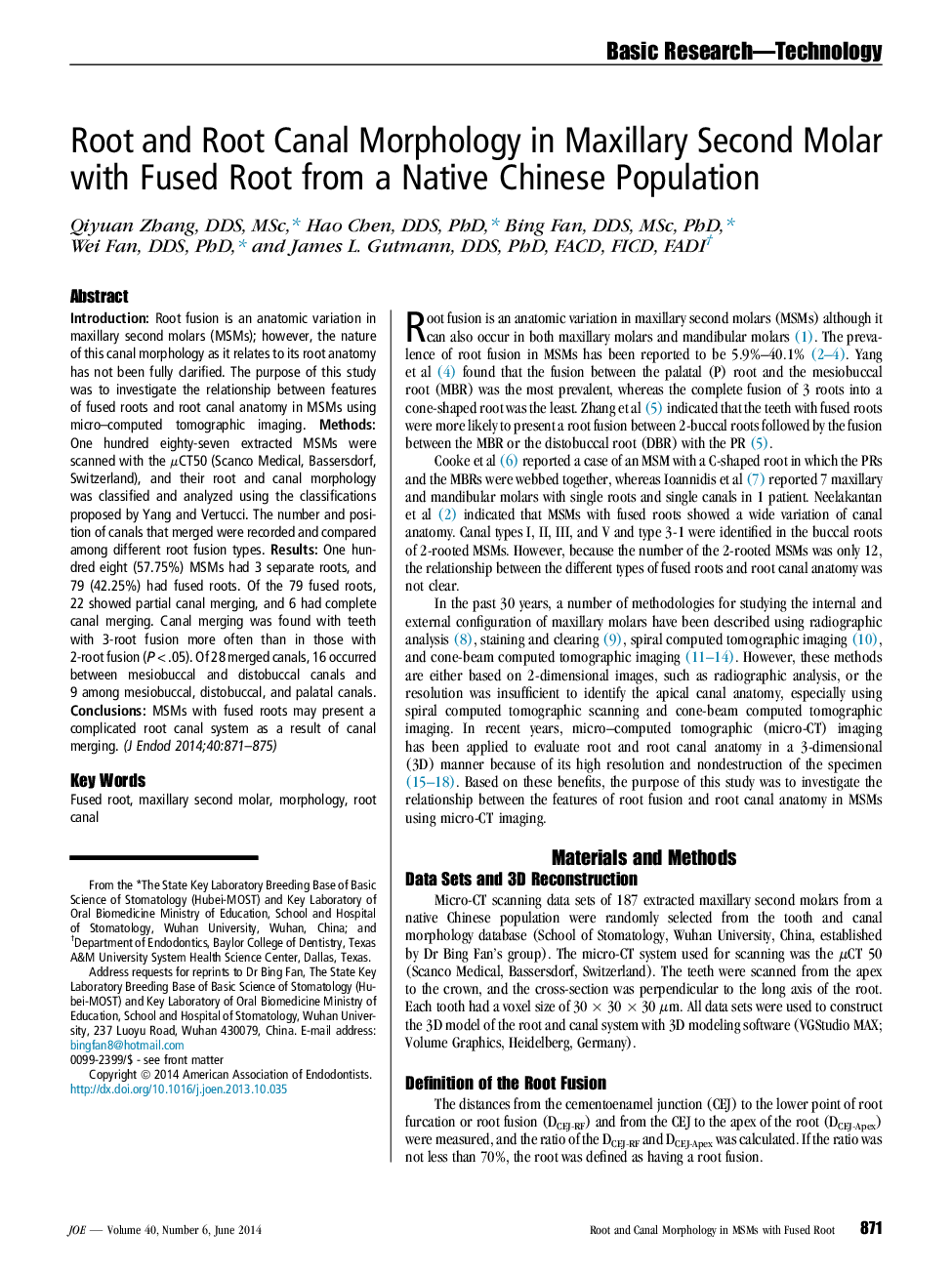| Article ID | Journal | Published Year | Pages | File Type |
|---|---|---|---|---|
| 3146876 | Journal of Endodontics | 2014 | 5 Pages |
IntroductionRoot fusion is an anatomic variation in maxillary second molars (MSMs); however, the nature of this canal morphology as it relates to its root anatomy has not been fully clarified. The purpose of this study was to investigate the relationship between features of fused roots and root canal anatomy in MSMs using micro–computed tomographic imaging.MethodsOne hundred eighty-seven extracted MSMs were scanned with the μCT50 (Scanco Medical, Bassersdorf, Switzerland), and their root and canal morphology was classified and analyzed using the classifications proposed by Yang and Vertucci. The number and position of canals that merged were recorded and compared among different root fusion types.ResultsOne hundred eight (57.75%) MSMs had 3 separate roots, and 79 (42.25%) had fused roots. Of the 79 fused roots, 22 showed partial canal merging, and 6 had complete canal merging. Canal merging was found with teeth with 3-root fusion more often than in those with 2-root fusion (P < .05). Of 28 merged canals, 16 occurred between mesiobuccal and distobuccal canals and 9 among mesiobuccal, distobuccal, and palatal canals.ConclusionsMSMs with fused roots may present a complicated root canal system as a result of canal merging.
